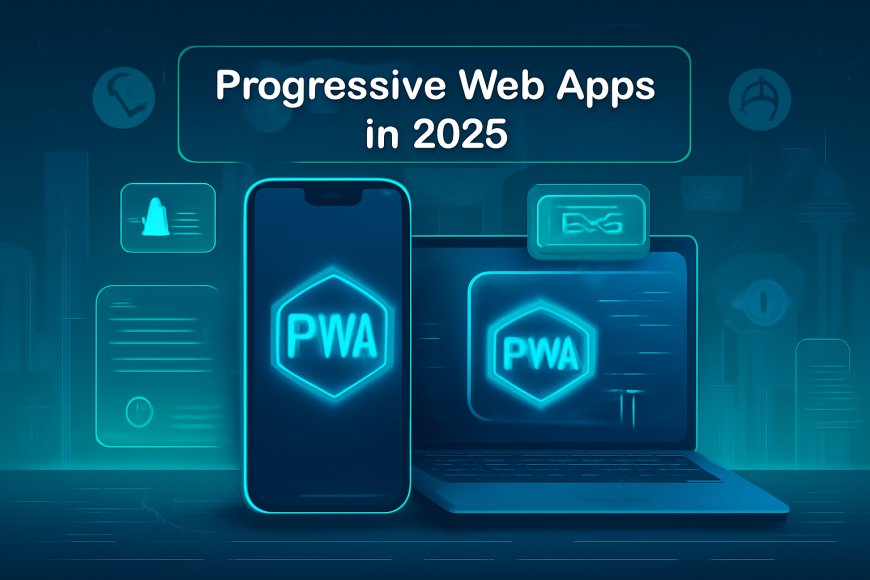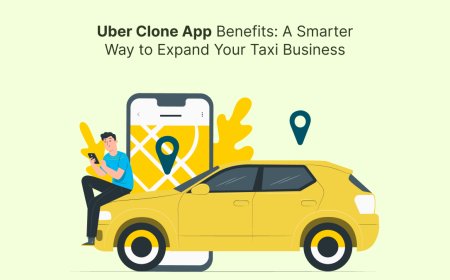Progressive Web Apps (PWAs) Are Back: Why Google Is Betting Big on Them in 2025
In 2025, Progressive Web Apps (PWAs) are making a big comeback—with strong backing from Google. Discover why PWAs are gaining momentum, how they boost SEO and UX, and why your next app might not need an app store at all.

A few years ago, Progressive Web Apps (PWAs) were a quiet buzzwordcool in theory, but often overshadowed by flashy native apps. Fast forward to 2025, and theyre not just backtheyre everywhere. Google is pushing hard, developers are excited again, and businesses are jumping in for the second (and smarter) wave.
But why now? Whats changed? And most importantlyshould your business consider a PWA in 2025?
Lets break it down.
What Exactly Is a Progressive Web App (PWA)?
In simple terms, a Progressive Web App is a website that behaves like a mobile or desktop app. You can install it on your home screen, use it offline, receive push notifications, and enjoy fast, app-like performancewithout downloading anything from the App Store or Play Store.
Think of it as the best of both worlds:
-
The reach of the web
-
The functionality of a native app
Whether youre a startup or a big brand, PWAs offer a lightweight, flexible way to connect with your users.
So, Why Is Google Pushing PWAs in 2025?
1. Theyre Fast, Light, and Built for Todays Web
Google has been obsessed with speed and user experiencejust look at Core Web Vitals. PWAs, by nature, are fast-loading, mobile-first, and dont eat up bandwidth. That aligns perfectly with Googles mission to make the web more usable, especially on mobile.
They now support deeper integration into Android and ChromeOS, including background sync, file system access, and even NFC via Project Fugu.
SEO win: Sites with PWA features tend to score higher on mobile usability and performancewhich affects search rankings.
2.Users Are Tired of App Stores
Lets be realnobody wants to download 10 different apps anymore. Between bloated installs, forced updates, and data-heavy usage, the native app fatigue is real.
PWAs solve that:
-
No downloads
-
Instant launch from browser or home screen
-
Auto-updates
-
No 30% revenue cuts from app stores
E-commerce, news platforms, and SaaS apps are especially benefiting from PWAs in 2025. Faster loading = fewer drop-offs = better conversions.
3.PWAs Are Finally Cross-Platform Ready
In 2025, it doesnt make sense to build separately for Android, iOS, web, and desktop if you can launch once with a PWA that adapts to all. Tools like Next.js, Nuxt, and SvelteKit are making this smoother than ever.
Youre not just saving on dev timeyoure also maintaining less code.
Want to launch a product fast and lean? PWAs are perfect for MVPs and agile product rollouts.
4.Googles Deep Integration with ChromeOS and Android
Google has quietly made PWAs feel like native appsespecially on Chromebooks and Android devices. Apps can now run in their own window, show up in app switchers, and use system-level APIs. And with Trusted Web Activities (TWA), you can even publish your PWA on the Play Store.
Fun fact: In 2025, over30% of apps used on ChromeOS are now PWAs.
5.AI + PWA = A Powerful Duo
PWAs today arent just dumb shells. Developers are blending in AI and LLMs (like GPT-4) for personalized experiences, real-time support bots, smart search, and predictive featuresall delivered inside the browser.
Think: A PWA-based productivity tool that suggests content, responds to commands, and works offline. Thats not the futureits 2025.
Real Brands Already Using PWAs in 2025
You may not realize it, but some of the most used platforms are powered by PWAs:
-
Twitter Lite: Full app feel, tiny data usage
-
Spotify: Browser-based music streaming, even offline
-
Starbucks: Lets users order offline with sync
-
Pinterest: Saw a 60% increase in engagement after switching
-
Forbes & MakeMyTrip: Blazing fast mobile experiences
Even enterprise SaaS platforms and fintech dashboards are using PWAs to offeroffline reporting, real-time notifications, and device-agnostic access.
Should You Invest in a PWA in 2025?
Lets keep it practical. You should seriously consider building a PWA if:
-
Your audience uses mobile and web frequently
-
You want fast updates without app store delays
-
You're optimizing for mobile performance and SEO
-
Youre targeting markets with unstable networks or low-end devices
-
Youre launching a lean MVP or global app
Industries thriving with PWAs:
eCommerce, fintech, education, news media, marketplaces, SaaS tools, travel booking, and content platforms.
Key Benefits of PWAs in 2025 (TL;DR)
-
Lightning-fast loading
-
App-like experience on web
-
Offline support & push notifications
-
Zero app store commission
-
SEO-boosted visibility
-
Easier updates & faster deployment
-
Works across all devices
Final Thoughts
PWAs are no longer a "nice-to-have"theyre a strategic choice for forward-thinking businesses in 2025. Google is pushing hard, the ecosystem is ready, and the tooling is better than ever.
If you're building an appor even just revamping your websitedont overlook what PWAs can offer. In a world that demands speed, flexibility, and smart experiences, Progressive Web Apps Development are the quiet revolution taking center stage.
















![Top 9 Real Estate Mobile App Developers in Riyadh, Saudi Arabia [2025 Edition]](https://www.biphoo.uk/uploads/images/202507/image_430x256_6879d0d524335.jpg)














